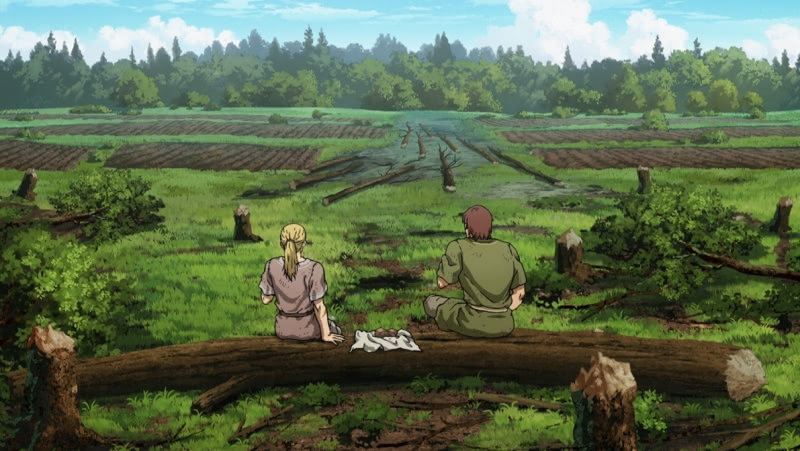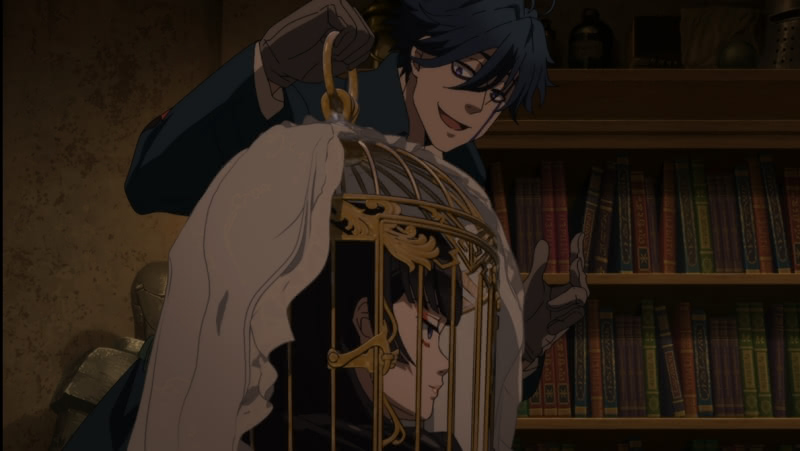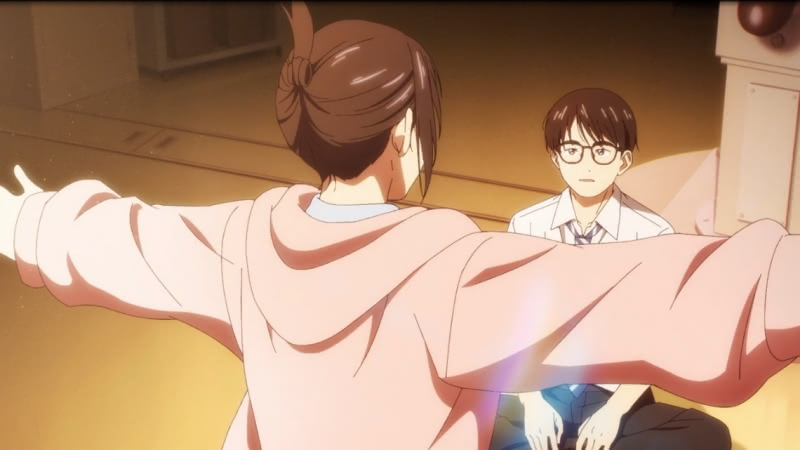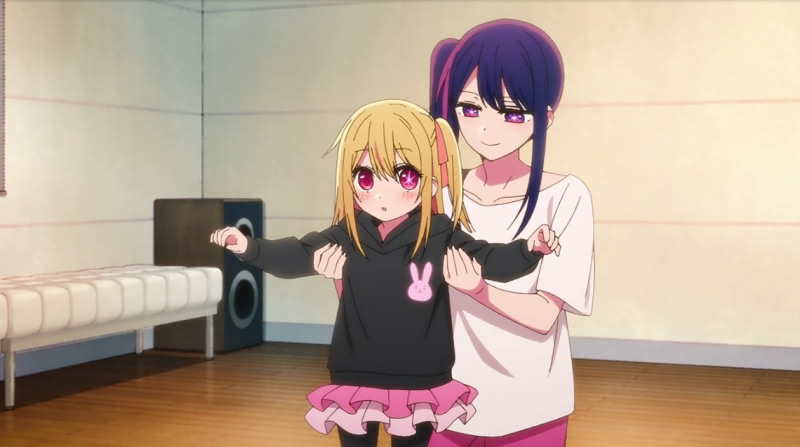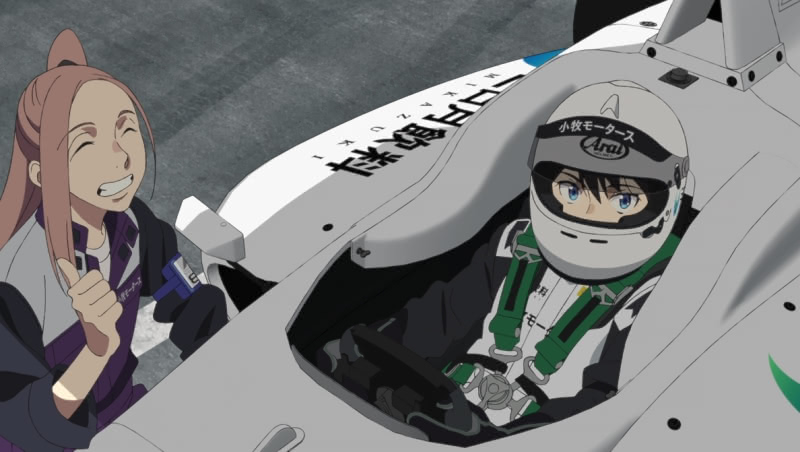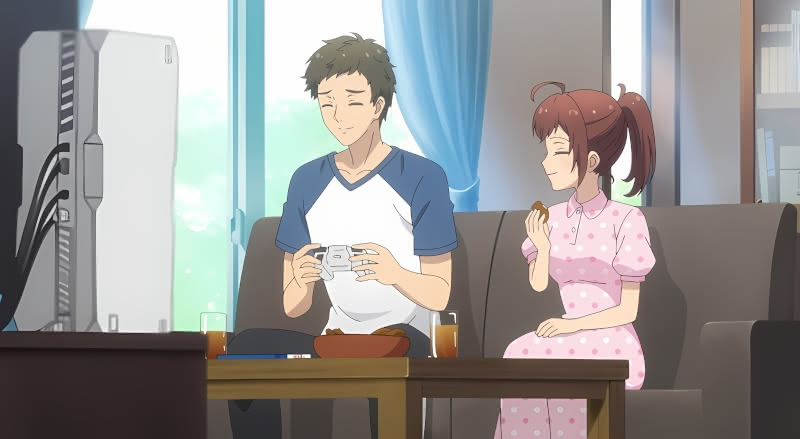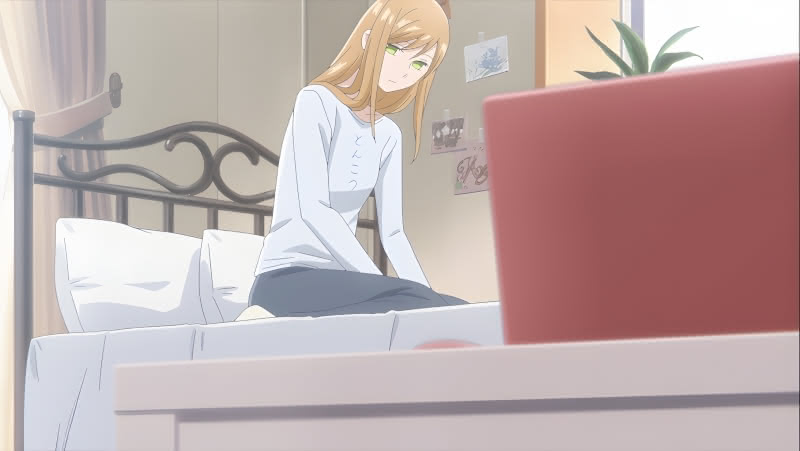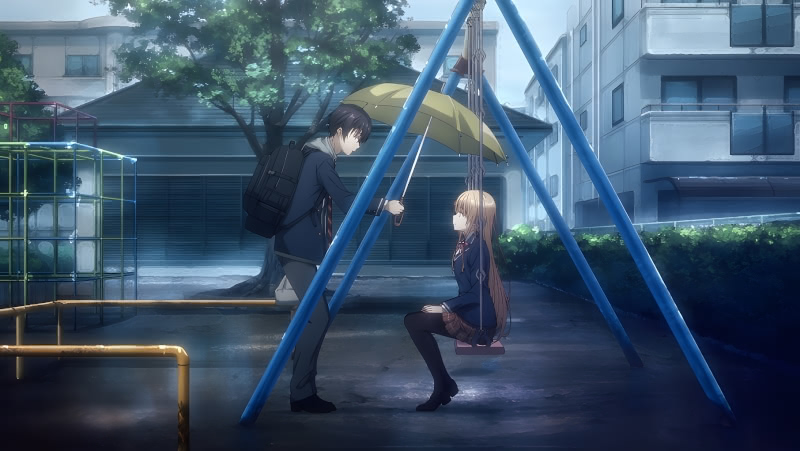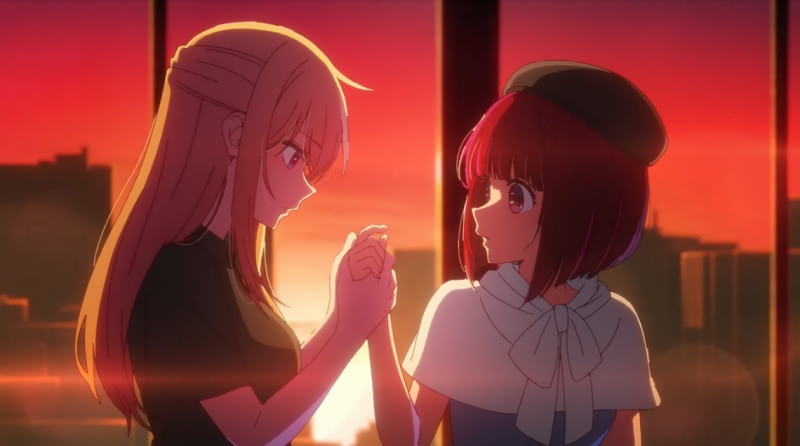Welcome to my third annual New Leaf Journal anime year in review (see 2022 and 2021). I watched (almost) all the 2023 anime series that I was inclined to watch (and dropped a few along the way). Below, I will review the year that was in anime by listing my six favorite series of the year along with honorable mentions and notables and category-specific awards.

But before getting to the rankings and other awards, we have some clerical tasks to work through.
Un-Spoiler Notice
This is intended to be a generally spoiler-free survey. That is, I will generally restrict my discussion of specific plot events to things that occur within the first couple of episodes of the series being discussed, and only so far as necessary to introduce the series in question. However, there is one case in which I may the plot more than people who have not seen a specific series would like, so I will append a notice to that discussion.
My Anime Background
In a discussion on anime review rating scales (as well as ratings for other forms of media), I argued that it is important for readers to have a broader understanding of the reviewer’s perspective in order to put his or her individual reviews into context. While this article will include rankings instead of scores, the principle applies. I articulated my general anime preferences in an article wherein I recommended anime for general audiences that aired from 2011-2020:
I have been watching anime since the latter half of the 2000s. The vast majority of shows that I have watched aired after 2005, but I have seen a decent number of shows from the early 2000s and a few from the 1980s and 1990s. I tend to prefer down-to-earth dramas to action shows (that will be reflected in my choices), but I have no hard-fast rule and watch a variety of genres.
Nicholas A. Ferrell
Because this article will feature my top-six series of 2023, I present my top three series from each of the previous six years (2017-2022) to give readers an idea of how I have evaluated recently-aired anime:
| Year | Anime of the Year | Runner-Up | Second Runner-Up |
|---|---|---|---|
| 2022 | Teasing Master Takagi-san [3/3] | Kaguya-sama: Love is War – Ultra Romantic [3/3] | Shadows House [2/2] |
| 2021 | SSSS.Dynazenon | Fruits Basket: The Final [3/3] | Kageki Shojo!! |
| 2020 | My Teen Romantic Comedy SNAFU! Climax [3/3] | Kaguya-sama: Love is War? [2/3] | Fruits Basket [2/3] |
| 2019 | Fruits Basket [1/3] | Teasing Master Takagi-san [2/3] | Vinland Saga [1/2] |
| 2018 | March Comes in like a Lion [2/2] | Revue Starlight | SSSS.Gridman |
| 2017 | Tsuki ga Kirei | March Comes in like a Lion [1/2] | Shouwa Genrouku Rakugo Shinju [2/2] |
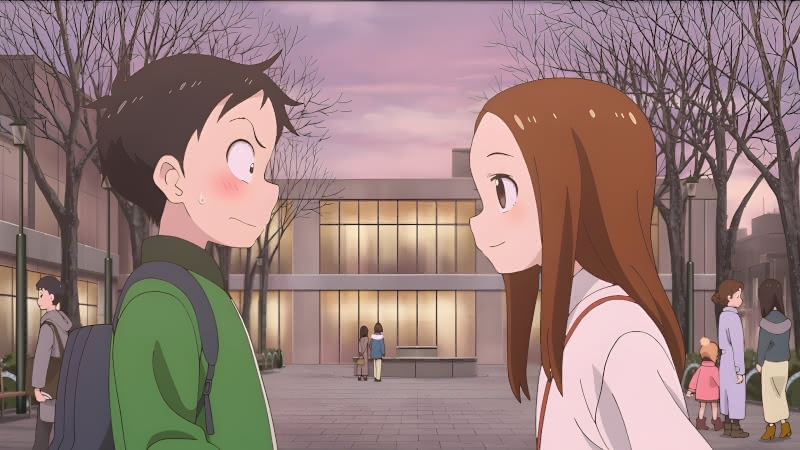
Before counting down to my revealing the three 2023 series that will be on the 2024 version of the above chart, I set forth the ground rules for which 2023 series we are considering.
Eligibility Rules for 2023 Ranking
Below are the rules regarding which series I am considering for the 2023 ranking.
- This list is for anime television series, not movies or original video animation. The shortest series I considered had 10 episodes, but I usually think of the cutoff as being 11. In any event, there were no ambiguous cases in my top-six.
- The series, or a specific season of a series, must have concluded in 2023. I will consider series and seasons that have a subsequent season announced but that concluded a season in 2023 (e.g., The Angel Next Door Spoils Me Rotten). However, if a series or season began in 2023 and continued directly into 2024, I will defer consideration until 2024 (e.g., Frieren: Beyond Journey’s End). If a series has two separate cours or seasons conclude in the same year, I will consider it as a single entity.
- I will consider non-first season anime that aired in 2023 for the ranking. For example, note that my entire top-three in 2022 consisted of second- and third-season anime. While I will consider subsequent seasons in and of themselves, I do tend to hold subsequent seasons to a stricter standard than first seasons in light of their having a natural barrier to entry.
- It should go without saying that I can only rank series I watched to completion. While I am reasonably confident that I watched every series that had a realistic chance of making my top-six, it is possible that I missed one. I will add a note to this article in the future if I subsequently watch a 2023-eligible season and I decide in retrospect it should have made this ranking. I note, however, that I have not had cause to amend by 2021 or 2022 rankings subsequent to their publication.
With the rules established, it is time to introduce my top-six anime seasons of 2023.
The Top-Six Anime Seasons of 2023 (and notables)
Below, I will list my top-six anime seasons of 2023 in reverse order (starting with the sixth ranked series). After reaching my anime season of the year, I will post notes on twelve seasons that aired in 2023 but did not make my top-six ranking.
6. Vinland Saga
Vinland Saga’s first season aired in 2019. This is an anime epic about Vikings, loosely based on real history and featuring fictionalized versions of many historical figures. While season one was very violent and action-packed, the overall message of Vinland Saga is pro-pacifism.
Regardless of one’s view of the series as a whole, I dare say writing a manga (the source material here) about Vikings to present a message of non-violence is an audacious choice that I must applaud.
| Series | Vinland Saga |
| JP Title | Vinardo Saga |
| Aired | January 10, 2023 through June 20, 2023 (24 episodes) |
| Season | Second; First season aired for 24 episodes in 2019 |
| Studio | MAPPA |
| Director | Shūhei Yabuta |
| Source Material | Manga by Makoto Yukimura |
| Resources | Wikipedia; ANN; MAL; AniDB |
Discussion
I will avoid spoiling the first season of Vinland Saga. However, because the first season very much leads into the second, my discussion of the second season will be vague.
Vinland Saga’s first season was action-packed, featuring many violent Viking battles, massacres, and instances of single combat. In contrast, most of the second season takes place on a farm. There is no way to explain this transition without spoiling the first season.
Vinland Saga’s messages in favor of building over destroying and reconciliation over revenge were always there in the first season – set up in its first four episodes – but lurked behind the series’ brutal depiction of Viking violence and all that followed from it. In the second season, Vinland Saga focuses more squarely on its messages through the prism of the dramatic transformation of one of the main characters. The second season does three things notably well. Firstly, its depiction of slavery is impressive – especially in how it shows a master who can be benevolent in some respects and remarkably cruel in others, never letting the viewer, or the characters, fully forget the meaning of slavery in 11th century Europe. Second, while some issues with character development in Vinland Saga in its first season carried over into the second, it handles the development of one of the two main characters in the second season very well on the whole – reaching a speak truth to power apex. Finally, there is an interesting, less obvious, message of gratitude in Vinland Saga’s second season which comes through in a complicated-but-compelling way in its end stages.
Having noted its strengths, I had some general issues with the pacing of Vinland Saga. I came across complaints about the first half of the second season being slow. While that is certainly true, I had more difficulty with the pacing in the more action-packed (albeit nowhere near as action-packed as the first season) second half, where it felt like several important arcs were stretched at least one episode too long, diluting the impact of some of the defining moments of the season. The series was weaker when it moved away from the farm story, wherein some issues I had with the development of a key character that carry over from the first season resurfaced. Finally, I found parts of the end of the season, as powerfully as it was delivered, to be unconvincing within the confines of the show’s own world.
I could have put Vinland Saga as high as third without much difficulty on account of the fact that my 6th through 3rd ranked series are very close on my list. However, with all things being close enough to equal, I opted to give the benefit of the doubt to the first-season shows.
5. Undead Murder Farce
Where do we start here? The main characters are Tsugaru Shin’uchi, a man who was turned into a half-ogre and understands that his superhuman strength comes with a limited life-span, and Aya Rindo, an immortal woman who lost her body (we meet her as a head in a birdcage) thanks to the machinations of the same individual who turned Tsugaru into a half-ogre.
We also have Aya’s (fully human) maid, Shuzuku Hasei, who is loyal to Ayu and less fond of Tsugaru. After meeting in Japan, they proceed to Europe to find the gentleman responsible for their problems, and in the process solve mysteries and encounter vampires, werewolves, Arsène Lupin, Sherlock Holmes, and many other luminaries of 19th century fiction.
Sure, why not?
| Series | Undead Murder Farce |
| JP Title | Andeddo Gāru Mādā Farusu |
| Aired | July 6, 2023 through September 28, 2023 (13 episodes) |
| Season | First/Only |
| Studio | Lapin Track |
| Director | Mamoru Hatakeyama |
| Source Material | Light Novels by Yugo Aosaki |
| Resources | Wikipedia; ANN; MAL; AniDB |
The director, Mamoru Hatakeyama, is a regular on my year-end rankings thanks to his having been director of the Kaguya-sama series (its third and second seasons were my anime of the year runners up in 2022 and 2020 respectively) and both seasons of Shouwa Genroku Rakugo Shinju (its first season was my 2016 series of the year and its second season was my third-place finisher for 2017). Combined with my fourth place ranking for the first season of Kaguya-sama in 2019, Mr. Hatakeyama has now featured in my year-end top five in six out of the last eight years with three different series. Not bad at all.
Discussion
Despite dealing with murder mysteries in two out of its three arcs, the highlight of Undead Murder Farce is its dark comedy. The comedy comes most often in the form of banter between Shin’uchi and Aya, often using their unfortunate circumstances for jokes and jabs. Whether they are passive aggressively trying to verbally one-up each other or Shin’uchi is regaling an unsuspecting European audience with an impromptu rakugo performance, these two are the main fun of the series.
After an introductory first episode, Shin’uchi, Aya, and the serious Shizuku take their act to Europe – and their European adventures are broadly split into three arcs. The middle arc, which features an all star cast of 19th century fiction stars – is great fun and it is hard to not appreciate the series’ take on these figures (Lupin is almost as fun as Shin’uchi). The first and third arcs are comparatively less interesting and rely on Shin’uchi and Aya more than what would be ideal. One reason the first and third arcs suffer is because they are murder mysteries and murder mysteries in this series suffer from a defect common to anime murder mysteries. Undead Murder Farce does not meaningfully invite the viewer to solve mysteries along with the characters. Instead, Shin’uchi carries Aya around – recall she is an immortal head in a bird cage – so she can collect clues and interrogate people. Eventually, Aya’s deductions all prove to be correct and we are treated, or subjected, to a long explanation of everything while the characters cease doing much.
Undead Murder Farce benefits from the steady, creative hand of Mr. Hatakeyama – and it is very well structured from beginning to end, leading me to suspect its shortcomings derive more from some of the limitations of the source material than the animation. It is also one of the better looking shows of 2023, sporting high production values and dynamism for the small number of fights. The visuals are on occasion too dark, but that is a minor complaint.
Undead Murder Farce is an unusual case of very strong main characters being somewhat let down by the overall plot. Like Vinland Saga behind it, I could have ranked Murder Farce as high as third, but after balancing the equities, including that the conclusion of its final arc did not offer a great ending point for the season, fifth seems about right. I hope that subsequent seasons (if we get them) provide its excellent main characters with a stronger story.
4. BanG Dream! It’s MyGo!!!!!
BanG Dream!, is a broad music media franchise featuring all girl bands. It includes manga, games, vtubers (I still do not totally get the vtuber thing), and, prior to MyGo, three anime seasons that aired from 2017-2020. I never saw the first three seasons, but I saw some positive assessments of MyGo and learned that, while it exists in the same universe as the rest of the BanG Dream! franchise, it does not require any prior knowledge. In the interest of making sure I covered all of my 2023 bases, I decided to give it a try.

MyGo starts with the breakup of a middle school all girls band after its first performance. Then, it follows an entirely unrelated character, Anon Chihaya, as she transfers to a new school. She decides to start a band after seeing that many of her classmates had bands. In so doing, she tries to recruit Tomori Takamatsu, who had been the vocalist for the band that broke up in the first season. Tomori, who is a fragile girl and one of the few anime characters who is written in a way that genuinely suggests a form of autism or other similar form of neuro-divergence, refuses due to her own feelings of guilt regarding her previous band. However, Anon’s attempts to recruit Tomori bring her into contact with two of the five members of the former band, and they, with one additional girl, eventually start a new band. However, contrary to most girl’s band anime (most of which I avoid, for whatever it is worth), this is not a cheery piece. They struggle, fight, and the three members from the previous band deal with their lingering regrets.
Series Details
| Series | BanG Dream! It’s MyGo!!!!! |
| JP Title | BanG Dream! It’s MyGo!!!!! |
| Aired | June 29 through September 14 (13 episodes) |
| Season | First; Second season announced. (Part of larger BanG Dream! universe) |
| Studio | Sanzigen |
| Director | Kōdai Kakimoto |
| Source Material | Original |
| Resources | Wikipedia; ANN; MAL; AniDB |
While I tend to disfavor excessive usage of exclamation marks, I will grant MyGo that it actually provides an in-show explanation of the five exclamation marks in It’s MyGo!!!!! It still disapprove of the exclamation mark abuse, but give credit for forthrightly addressing the matter (in a measured way) where it is due.
Discussion
Despite being a girl’s band show, MyGo is primarily a character drama, or melodrama. Here, I will start with the visuals. All of the characters are done in CGI, which tends to not be my preference. Here, it works well and the backgrounds in MyGo are particularly impressive. One reason I selected Tsuki ga Kirei as my 2017 anime of the year against what was, on my list, the best field of contenders for the honor other than 2016, was because of its attention to detail in showing, instead of telling, the feelings of the characters. While MyGo is not quite on Tsuki ga Kirei’s level in that area (to be fair, nothing is on Tsuki ga Kirei’s level in that area), it is one of the best I have seen in anime. Another merit in the visuals department is MyGo’s cinematography, which is impressive not only in the series’ few performance scenes, but also in its exceptionally creative and memorable third episode – the stand-out episode of the series – which is shot from a first-person perspective. Another strong point is its depiction of performances. The series does not forget that the band it is following is very amateur, and the lack of polish and myriad mishaps come through in the performances.
MyGo earns its ranking for two reasons. Firstly, Tomori Takamatsu is an exceptional character. As I opined above, while the descriptor “autistic” is vastly overused for fictional characters who were likely not written with any such intent, Tomori is one of the few in anime (I cited Kimi ni Todoke as another example) where it is more than plausible here. While Tomori is not the first view-point character in the series, it quickly becomes clear that she is the most important character. Her self-doubt, feelings that she is different from everyone else, tendency to blame herself for the former band imploding, and her struggle to deal with loss or the prospect of losing something again define her character and the paths of the main cast (I will take the leap of faith that she was, in the past, convinced to sing in front of people). Returning to my visual point, the series pays careful attention to using visual and behavioral cues to depict Tomori’s feelings at different points of the story. The series’ finest episodes, 3 and 10, make Tomori the view-point character.
Separate from Tomori, I appreciated the relatively measured character development here. All five members of the new band have obvious flaws, some more objectionable than others, and while they all make progress to one extent or another, those flaws are still there when the season reaches its conclusion.
I found MyGo difficult to evaluate in that while it has some unique strengths among 2023 series, there are also some significant flaws. While the melodrama is understandable to the extent that we are dealing with somewhat emotionally unstable teenagers, it is a bit thick at times. The series too often has one girl break out into a full sprint when she is confronted with a person saying something she does not want to here. It is one thing when Tomori does it once, but it is another when we have a chase scene every other episode. While I do not think the precise reasons the former band broke up were ultimately necessary to define (if anything, many of the series’ conflicts stem from the inability of a couple of characters to let go). However, the series devoted too many scenes to the main figure in the former band to neglect her motivations to the extent it did. Finally, the last episode – which concluded by devoting half of its screen-time to a new, hitherto unseen band, as a segue into the forthcoming second season – was poorly conceived and did not do justice to the main cast.
I had more difficulty deciding where to place MyGo than any other series in the top six. Its premise and plot impose a ceiling on it. But granting that ceiling, a superb and thoughtful production effort delivered a memorable series highlighted by two of the finest episodes of 2023. Taking the bad with the good, four seems like a fair placement for a series that made the most of the medium to make the most of a simple story.
3. Insomniacs After School
Here, we have a concise, to-the-point title that actually matches the content of the anime series. What are the chances!?
Insomniacs is set in a high school. The principal main character is Ganta Nakami, a very intelligent high school student who suffers from insomnia and is somewhat cantankerous as a result. The co-main character is Isaki Magari, a friendly, overly-enthusiastic bundle of energy who, despite having a drastically different temperament than Ganta, also suffers from insomnia. Their insomnia brings them together one day when Ganta stumbles on Isaki’s secret nap-time spot in the school’s dusty old observatory. This chance encounter leads to their bonding over insomnia – and they eventually are compelled to revive the school’s old astronomy club to continue to have the right to use the observatory that they had already gone to the trouble of furnishing without permission (Ganta does nearly all of the meaningful star-gazing). We then see Ganta and Isaki grow closer, Ganta perfect his nighttime photography with the help of a now-graduated former club member, and smaller story lines involving Ganta’s and Isaki’s friends (or singular friend in Ganta’s case).
Series Details
| Series | Insomniacs After School |
| JP Title | Kimi wa Hōkago Insomunia |
| Aired | April 11, 2023 through July 4, 2023 (13 episodes) |
| Season | First/Only |
| Studio | Linden Films |
| Director | Yūki Ikeda |
| Source Material | Manga by Makoto Ojiro |
| Resources | Wikipedia; ANN; MAL; AniDB |
Discussion
Insomniacs centers on the development of the relationship between Ganta and Isaki, and despite Ganta’s prickliness and Isaki’s occasionally excessive exuberance, both are charming and sympathetic in the way one would hope if viewers are expected to want to see their relationship grow. Their dialogues and relationship development are unusually natural for anime and the progress they make as well as the ultimate conclusion is believable. Despite insomnia bringing them together, it becomes slightly less of a focus at points after the first episode – although it is never too far in the background. Like MyGo below it, Insomniacs trusts viewers to pick up on nuance, albeit it relies more heavily on its script than its production values (Insomniacs is the only series in the top six with average visual production values). I also appreciated that while the focus is very much on the main pair, the side characters are treated like real people and are thus able to contribute meaningfully to the series.
Of the main pair, Ganta is the stronger character. He is serious and intelligent, but simultaneously immature when confronted with adversity and, as the series reveals in its later stages, is not the most likely to confront challenges. I generally liked Isaki and found her more sympathetic as the series went on, but she has some exuberant tendencies that I sometimes found annoying and these tendencies sometimes rub off on Ganta to his detriment.
Despite being a very different series than MyGo at 4th on my ranking, Insomniacs suffered from some similar, albeit less frequent, melodramatic tendencies. Unfortunately in the case of Insomniacs, these tendencies sometimes rear their head in important moments. Ganta, who is ordinarily level-headed, has difficulty regulating his emotions when things do not go his way. Perhaps owing in part to the influence of Isaki, this sometimes results in primal yelling or running (the latter with shades of MyGo). While Ganta’s melodrama is mercifully rare, the series would have done well to handle it in a more sober way when it pops up in key moments.
With that being said, if my most significant complaint about a series is a couple instances of being over the top in its depictions of Ganta having a meltdown, it is on solid footing. Insomniacs is the second most consistent series in my top six (behind my yet-to-be-revealed anime of the year choice), and it does a very good job of developing its two main characters and their relationship. Unlike half of the series in my top six, it ends with a strong final episode which manages to thread the needle of leaving open the possibility of future seasons (I understand this season only adapted part of the manga) while bringing matters to a satisfying conclusion for the anime-only audience.
2. Oshi no Ko
NOTE: It is impossible to discuss Oshi no Ko in even a superficial way without spoiling the conclusion of its two-hour theatrical-length first episode. I do not think the spoiler would ruin anyone’s potential enjoyment of the episode or the series, but consider yourself warned that my discussion of Oshi no Ko will reference the end of the first episode – which is the equivalent of four full-length episodes (Oshi no Ko is effectively 14 episodes rather than its listed 11). I will not spoil specific events later in the series, opting instead to discuss it in the same general way I discuss the other series in this article. With all this being said, feel free to skip ahead to my anime of the year if you are so inclined.
Oshi no Ko was a animated force of nature, announcing its arrival with a film-length opening episode approaching two hours in length. I came to understand that it was popular in Japan and in the United States at conventions and on television streaming services in Japan and internationally. Perhaps most notably, its opening theme song topped Apple’s global music chart. The series is based on a manga by Aka Akasaka, who is behind the also-popular Kaguya-sama: Love is War series (the second and third season of the Kaguya anime adaptation were my anime of the year runner-ups in 2020 and 2022 respectively).
Oshi no Ko has an odd, absurd, and unpleasant (in a hard to pin-down-way) premise. An obstetrician-gynecologist is obsessed with a popular idol named Ai Hoshino – as is a terminally ill girl he plays a role in caring for at his hospital. That idol, Ai, arrives at the hospital with a secret pregnancy and is determined to see it through and then return to her career as an idol while being a mother in secret – all over the timid objections of her manager. Right before she gives birth to twins, the doctor is murdered under mysterious circumstances and the terminally ill girl passes away. Through some unknown mechanism, the doctor is reincarnated as Ai’s newborn son, Aquamarine “Aqua” Hoshino, while the girl is reincarnated as Ai’s newborn daughter, Ruby Hoshino. Ai herself is later murdered while Aqua and Ruby are young (and shortly after Aqua took a few child actor jobs). We skip ahead to the future where Ruby is determined to become an idol like Ai .. In turn, Aqua carrying some obvious identity issues in that he remembers his previous life, is determined to find his way in show business in order to learn who murdered his mother.
Details
| Series | Oshi no Ko |
| JP Title | Oshi no Ko |
| Aired | April 12 through June 28 (11 episodes; equivalent to 14 in length) |
| Season | First; Second season begins in 2024 |
| Studio | Doga Kobo |
| Director | Daisuke Hiramaki |
| Source Material | Manga by Aka Asaka |
| Resources | Wikipedia; ANN; MAL; AniDB |
Discussion
Despite the fact that Oshi no Ko was my anime series of the year front-runner until late December, I have mixed feelings about the series.
Unlike many positive assessments of Oshi no Ko, I was not particularly moved by the theatrical-length first episode, which focused on the reincarnation backstory (its haunting near-final scene, however, is one of the most striking pieces one will find in anime, for better or worse). The episode was necessary since the figure of Ai Hoshino looms over the series and is central to the character of the principal protagonist, Aqua Hoshino, but it was good to separate it from the rest of the season. One reason Oshi no Ko was able to essentially release a movie as its first episode is because this season clearly had a colossal budget (by anime TV standards) and an all star production team and cast. This is also evinced by the fact that Oshi no Ko maintained borderline movie production values throughout its entire run.
After the first episode, the reincarnation point lurks in the background of Aqua’s character, but otherwise does not play a major role in the first season. It shifts to focusing on various entertainment-industry plots including Aqua being convinced to play a role in an episode of a TV show, a reality television arc, and Aqua’s sister, Ruby’s quest to become an idol just like Ai. Oshi no Ko has been described as a bleak commentary on the entertainment industry in Japan and that is true to some extent, but things tend to end amicably enough for the main cast in the first season. Its merits as a commentary are a mixed bag. At its best, Oshi no Ko shows an issue and leaves it to the viewer to derive the significance. On the other hand, Oshi no Ko turns its best character into a mouthpiece for the author to offer an explainer. Speaking of which…
Oshi no Ko’s best and most interesting character is neither of the reincarnated twins, but instead Kana Arima, who we first meet as a prodigy child actress in the movie-length first episode. Like many child actresses, Kana’s popularity does not carry on as she grows older – despite the fact that the series makes clear, both directly and indirectly, that she is actually a genuinely talented actress. The Kana we meet is a good person at heart, but jaded, cynical, and capable of saying some very bleak things. She believes in her talent and ability to do things well on one hand, but she nevertheless has internalized external critical assessments of her ability on the other. The theme song visuals make clear that she is roped into joining Ruby’s fledgling idol group, which gives her a consistent presence in the story although her importance fluctuates from episode to episode. It is no exaggeration to say that most of Oshi no Ko’s best episodes and moments involve Kana.
Oshi no Ko owes its runner-up, near anime of the year performance, to great moments. It is more inconsistent in terms of quality than any series I ranked this high in the previous years – beyond its movie episode which I had some mixed feelings about, its only stand-out episode in the first half was episode 4, and even there the outstanding qualities were limited to part of the episode. But Oshi no Ko made a habit of building up to stunning scenes at the end of episodes. The ends of episodes 1 and 6 generated discussion, but episodes 7-10 conclude with memorable scenes, and the final sequence of episode 9 is the finest sequence of any anime in 2023 (there is a scene in the middle of episode 4 that stands with the great concluding scenes in the second half). Few series have more attention-grabbing moments than Oshi no Ko.
Oshi no Ko brute forced its way to almost winning my anime of the year nod. Its production values are on the very high end of what one could hope for from a TV anime, and it knows how to build up to and deliver great moments. At the same time, it has its share of dull story-lines, especially in its first half, and it is very inconsistent for a series that I am ranking this high. The series leaves an overall impression of lacking firm grounding in a particular time and place, which I would tend to expect to see from a high caliber series. With respect to the anime of the year list, Oshi no Ko – a series defined by moments – simply makes a hash on the second half of its final episode, using it, like MyGo, to introduce the story-line for a second season instead of actually wrapping up the first season. It was not quite as egregious in Oshi no Ko’s case due to factors beyond the scope of a spoiler-free review, but it is not impossible that I would have given Oshi no Ko the anime of the year nod had it opted to end on its best foot.
In any event – granting its flaws, Oshi no Ko was my anime series of the year until December 17, 2023…
1. Overtake!
Overtake! appears to be about F-4 open wheel car racing on the tin. To be sure, it is about F-4 racing and has enough racing to loosely qualify as a sports anime. But car racing is the vehicle (pun intended) for a story about doing your best through adversity, overcoming your own demons, learning how to accept kindness, and coming to understand those who care about you.
Overtake! has two lead characters. We first take the view of Kouya Madoka, a 30-something year old divorced photographer who for a reason not clearly articulated until later in the story has developed a strong inhibition against taking photographs of people. He is sent on an assignment by his ex-wife, who is a magazine editor, to photograph cars at a local F-4 race. Although Kouya knows nothing about car racing, he finds himself inspired by a small, underfunded, single car team supporting a teenage driver named Haruka Asahina. After Asahina crashes in the race, Kouya is so inspired by seeing Haruka cry in frustration that he manages to snap a photo despite himself (which sets in play later events). Kouya, unprompted, volunteers to help the team find a sponsor so that it can better support Haruka – and he is not deterred when he learns how expensive even low level F-4 racing is or by Haruka’s somewhat prickly personality.
Over the course of the 12-episode series, we see Kouya struggle to overcome his past, Haruka struggle to realize his dream of making a race podium (which ties into his past) while driving for an underfunded single-car outfit (owned by a father-figure character and employing a mechanic who is the same age as Haruka). There are also interesting stories of other characters – including the two drivers on the best funded team in the local F-4 circuit and a girl who works for that team while being the childhood friend of the mechanic on Haruka’s team. Without spoiling, I will say that Overtake! resolves all of its loose ends by the end of its run (and accordingly, it would seem to be a very unlikely candidate for a second season).
| Series | Overtake! |
| JP Title | Ōbāteiku! |
| Aired | October 1, 2023 through December 17, 2023 |
| Season | First/Only |
| Studio | Troyca |
| Director | Ei Aoki |
| Source Material | Original |
| Resources | Wikipedia; ANN; MAL; AniDB |
The director, Ei Aoki, directed my 2011 anime series of the year, Wandering Son. His best-known work however is the action-packed Fate/Zero, which aired from 2011-2012 and, like Wandering Son, earned an honorable mention from me on my list of recommended anime for general audiences from the 2011-20 decade. With my giving Overtake! the nod for anime of the year, Mr. Aoki is the only director on my anime of the year list (going back to 2005) to win the honor for work on two unrelated series.
Discussion
Overtake! is by far the most down-to-Earth anime series in the top-six. What I appreciated most about the series – a point also noted on the excellent Sakugaboro blog – is that Overtake! consistently respects the intelligence of its audience. The characters speak and act in realistic ways, seldom showing their hand first but always providing enough information to fill in the blanks – or most of the blanks – before naturally and decisively answering remaining questions.
Despite that initial praise, I did not seriously consider Overtake! an anime of the year candidate until it reached the home stretch (pun intended). Its first two-thirds were solid, featuring good writing and subtle character development, but not remarkable. At least one entire episode, the fifth, felt like a bit of a waste (although, to its credit, it did articulate what would be an important theme in the end). However, being an entirely original production, the team behind Overtake! had a clear and distinct idea about how they wanted to realize their vision. Overtake! announced its arrival as an anime of the year candidate with its spectacular 9th episode, which defines the past conflict of one main character and the development of another and (ranking spoiler) stands as my episode of the year. From there, Overtake! proceeds to use its last few episodes to build toward a dramatic final episode which brought thematic closure to the entire series (as well as its best on-the-track action).
(It is not excessively literal to say that Overtake! became the anime of the year on the final turn.)
Overtake! is primarily the best season of the year because of its very human main characters – Kouya and Haruka. Kouya is the highlight, and the reason for his struggling to take photos of people proves to be more interesting than the simplest possible explanation. Haruka grows as a character throughout the series in part because of Kouya’s unconditional support, but also in part by learning how to accept support. The other characters, from the pair of drivers for the powerful rival Belsorriso team to Kouya’s ex-wife and Haruka’s team are all compelling, and some anime viewers may appreciate the series giving adults as much (if not more) attention than high school-aged characters (despite Haruka being in high school, none of the series focuses on school).
Overtake! is a case where excellent writing is supported by strong production values. It is not a force of nature like Oshi no Ko,, Overtake! is well animated and fluid from beginning to end with careful attention to detail (Kouya’s face gives away quite a bit). The car racing action, which uses CGI, is also very good – especially in the first and last episodes.
Last 4 Anime Series of the Year:
- 2023: Overtake!
- 2022: Teasing Master Takagi-san
- 2021: SSSS.Dynazenon
- 2020: My Teen Romantic Comedy SNAFU! Climax
Overtake! developed its characters and plot deliberately, but managed to resolve the central points of the season in episodes 9 and 12 without feeling at all rushed. It is a genuinely well-conceived piece of entirely original anime writing. It is often the case that I choose what I consider to be the best-written anime series in a given year as the series of the year. 2023 is no exception to the trend. With its careful character development and superlative conclusion, Overtake! overtook Oshi no Ko for top honors in my 2023 review of the year that was in anime.
Notables and Honorable Mentions
Below, I will offer notes on 12 series that did not make my top-six list. I decided to limit this list to first seasons only, although I did watch several sequel seasons that did not make my top-six cut. Please note that the below series are listed in alphabetical order and are not intended to be a ranking (there are series that I liked more than a few of the 12 I singled out for comment below).
16bit Sensation (Fall: 13 episodes)
16Bit Sensation is the most educational anime of the year. We follow Kohona Akisato, a 19-year old visual novel illustrator and super-fan of classic bishoujo visual novels. She is not satisfied with the work she has in 2023, but, through circumstances, is transported back in time where she is able to work on the old style visual novels she loves using time-appropriate tools. I learned a good amount from watching the series and would recommend this to anyone who is interested in visual novels or 1990s Japanese game development (especially specific to PC-98 and the transition from PC-98 to Windows). I briefly considered it a potential top-six candidate in the middle of its run, but its strange ending combined with Kohona’s unfortunate tendency to yell all of her lines left it as a fun-and-educational curiosity.
Endo and Kobayashi Live! The Latest on Tsundere Villianess Liselotte (Winter: 12 episodes)
This is a fun little series wherein two friends play a dating sim together but are unexpectedly able to communicate with the in-game characters, which they use to try to help one character avoid a bad ending. I wrote a full review for those who are interested.
Heavenly Delusion (Spring: 13 episodes)
An entry in the ever-popular genre of teenage post-apocalyptic media. It has generally strong production values, although the quality was inconsistent from episode to episode. The season was hindered by its odd structure, which has it juggling two stories that never intersect, jumping between them. Moreover, one of the stories is significantly less interesting than the other – which is a problem because the better story tops out as decent. While the season as a whole had its moments, the last episode was a catastrophe (not a waste like MyGo and Oshi no Ko in my top-six, an utter disaster) to the point that I will almost certainly forego the opportunity to evaluate future seasons.
“Ippon” Again (Winter: 13 episodes)
This series about a high school girl’s judo club inspired what I consider to be my finest anime hair color article, so it is only just that I give back and list the series as an honorable mention. “Ippon” Again is pleasantly inoffensive. I appreciated that it is a girl’s sports anime that is actually about girls partaking in a sport instead of some existential struggle to prove themselves to or against the boys. Take notes, future anime about girls sports teams: You can really make a girl’s sports anime about girls competing in sports against their peers.
MF Ghost (Fall: 12 episodes)
MF Ghost is a new entry in the long-running Intial D street car racing universe. Despite not being familiar with Initial D, and thus missing some of the call-backs, I very much enjoyed the intense racing action and, on more than one occasion, was more looking forward to the new MF Ghost episode than to Overtake! (note they aired on the same day). The writing is often endearingly corny and the story is thin, but the racing and the Chad-faced protagonist made the season fun (see image at the top of the article). Despite the fact that it ended in the racing equivalent of the middle of a sentence (wherein it announced a second season), it is one of two series outside my top six that I considered for a ranking (it also inspired me to look into watching Initial D).
My Clueless Best Friend (Spring: 12 episodes)
Set in elementary school, the shy, bullied, but very sweet Akane Nishimura is befriended by a transfer student, Taiyō Takada, who is a bundle of energy and very enamored with Akane. It is a sweet show (the main pair are adorable) that shows some depth in its second half after a sometimes overly-frenetic first half. I viewed it as a fringe top-six candidate after the spring season, but neither the comedy nor character development were quite enough to be in the mix at the end of the year.
My Love Story with Yamada-kun at Lv999 (Spring: 12 episodes)
I used a scene where the heartbroken college student protagonist, Akane Kinoshita, opened her Windows laptop for a joke article. Therein, I noted that I did not much like the first few episodes of the series, which featured said protagonist in mourning over her breakup and dumping her problems on a socially awkward, taciturn pretty boy professional gamer (Yamada) who she realizes at a late point is actually a high school senior. To its credit, it improved greatly in the second half and actually concluded the season in a meaningful way. There are enough good qualities that this could have been a viable top-six candidate had it curbed its enthusiasm for gratuitous shoujo romance rival tropes. I am crossing my fingers for a second season (something I did not think I would write after the fourth or fifth episode).
Skip and Loafer (Spring: 12 episodes)
A very pretty and well-framed show about a group of mostly nice high schoolers going about their lives, starring an over-achieving country girl who tested into a competitive Tokyo high school and the melancholy pretty boy who becomes friends with her. It is a gorgeous anime and on paper this had many things going for it that would suggest a positive review from me. In practice, I found the main characters and their problems dull – which is a problem in a slice of life character piece. I would, however, be interested if a second season has more interesting material to cover.
Sugar Apple Fairy Tale (Winter: 12 episodes; Summer: 12 episodes)
A fairy tale anime featuring a strong-willed and talented girl with big dreams and the warrior fairy who accompanies her. It has a distinct visual style reminiscent of one of my favorite series, 2012’s Humanity Has Declined. The fundamentals are there for a good series, and the heroine, Anne, is a strong character – but it it is let down by its writing, which needed to be above average for what the series wanted to do but was too often sub-mediocre. Both cours (think seasons) ended poorly and the production values took a noticeable hit midway through the second cour. There, I lost my dwindling hopes for a series I had been rooting for.
The Angel Next Door Spoils Me Rotten (Winter: 12 episodes)
In my very long full review of Angel Next Door, I described it as a “borderline” top-six series. It ended up being the first show outside my top six, so I suppose that my initial impression was over the target. It featured the best romance in anime in 2023 and its final episode was one of the best episodes of the year, but it was let down by sub-par production values, a shaky first half, and too many instances of not trusting the audience to get the point. Its second season is on the way, so it will have a chance to break through in a future ranking.
The Dangers in My Heart (Spring: 12 episodes)
I discussed The Dangers in My Heart in a full review, so you can read that for my thoughts. It is a strong character piece and middle school romance that manages to overcome a very bad first impression of its main character. Its second season debuts this month (being January 2024), so that should be in play for the 2024 list. I must also note its first episode inspired one of our most popular articles of 2023.
The Girl I Like Forgot Her Glasses (Summer: 12 episodes)
I feel obliged to include this one after having written a full article about its divisive episode 1 animation and a second article about hair color in the series (maybe the second was just to prove I was still watching). The animation remained odd and beyond the series’ premise of a half-blind girl always forgetting her glasses – which admittedly demands excessive credulity – it was a pedestrian, sometimes cute, middle school romance that does not end in a much different place than it begins. It is fine, but there is little to recommend it over many other series in the broader genre.

Major Category Awards
My major annual anime award is for the best overall series. Having given the 2023 honor to Overtake!, we can move on to the category-specific awards. I traditionally honor the best female character, male character, aesthetics, writing, episode, and op/ed sequence.
Aesthetics
My aesthetics award goes to the anime with the best overall audio-visual component. Note that this is not an animation award – I prefer to consider anime as art here rather than the product of the best budget. However, sometimes overwhelming production values and aesthetic quality converge…
| Rank | Series | Studio |
|---|---|---|
| 1 | Oshi no Ko | Doga Kobo |
| 2 | Tsurune: The Linking Shot | Kyoto Animation |
| 3 | Skip and Loafer | P.A. Works |
| 4 | BanG Dream! It’s MyGo!!!!! | Sanzigen |
Previous 3 Winners
- 2022: Dance Dance Danseur
- 2021: SSSS.Dynazenon
- 2020: Keep Your Hands Off Eizouken!
The top three series on my list would all be worthy winners of the anime aesthetics award. I give the narrow nod to Oshi no Ko over the second season of Tsurune (solid, albeit not top-six level) in part because where everything is close to equal, I will give the edge to the second season here. Regarding aesthetics specifically, I will single Oshi no Ko’s depiction of stage presence as being particularly notable. Skip to Loafer is less technically dramatic than Oshi no Ko and Tsurune, but it uses a beautiful color pallette with terrific character designs and expert framing to put together a timelessly aesthetic piece. BanG Dream! takes the final spot despite my mixed feelings about CGI characters largely for its creative and refreshing camera work. Overtake! and Undead Murder Farce would have also been worthy choices from the series I watched.
Writing
This could be called the script award, but I prefer writing for one simple reason. There are many good anime series that are episodic in nature and focus on small independent stories instead of an over-arching narrative.
| Rank | Series | Head Writer | Studio |
|---|---|---|---|
| 1 | Overtake! | Ayumi Sekine | Troyca |
| 2 | Insomniacs After School | Rintarō Ikeda | Linden Films |
| 3 | Oshi no Ko | Jin Tanaka | Doga Kobo |
| 4 | The Dangers in My Heart | Jukki Hanada | Shin-Ei Animation |

Previous 3 Winners:
- 2022: Teasing Master Takagi-san
- 2021: SSSS.Dynazenon
- 2020: My Teen Romantic Comedy SNAFU: Climax
Overtake! is the clear winner for the writing award, making it six consecutive years on my ranking where the writing award dovetails with the overall award. I gave the fourth spot to The Dangers in My Heart, which was outside my top six (probably 9th or 10th if I went that far on my ranking) for its well-written, albeit difficult, protagonist.
Best Characters
I separate the female and male character awards – both because that is the award show style and also because I think it is a meaningful distinction in the context of recognizing great anime characters.
Female Character
| Rank | Series | Character | Voice Actress |
|---|---|---|---|
| 1 | Oshi no Ko | Kana Arima | Megumi Han |
| 2 | BanG Dream! It’s MyGo!!!!! | Tomori Takamatsu | Youmiya Hina |
| 3 | My Clueless First Friend | Akane Nishimura | Konomi Kohara |
| 4 | The Angel Next Door Spoils Me Rotten | Mahiru Shiina | Manaka Iwami |
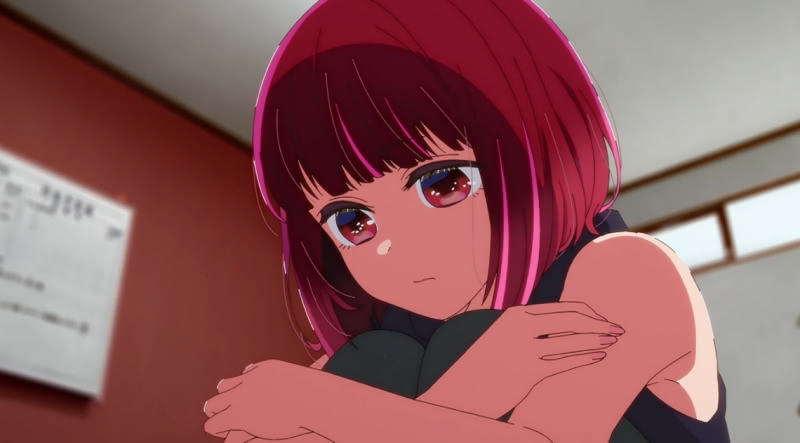
Previous Winners:
- 2022: Teasing Master Takagi-san | Takagi
- 2021: Fruits Basket: The Final | Tohru Honda
- 2020: My Teen Romantic Comedy SNAFU! Climax | Yukino Yukinoshita
(1/16/24 Correction: I originally listed Kana Arima’s voice actress incorrectly. Congratualtions to the correct voice actress, Ms. Megumi Han.)
This was ultimately a two-2D girl race between Kana and Tomori. Both featured in their respective shows’ best episodes and both had some relatively unique issues (by anime standards) that made them stand out. Tomori gets credit for being more important to the overall story of her series than Kana is to Oshi no Ko, but the difference in quality in Oshi no Ko between story lines where Kana is a major character vs when she is a peripheral character were telling. I give the slightest of nods to Kana.
I will also give special mention to Ms. Manaka Iwami, who voiced my fourth best female of the year. I discussed her in some detail in an article about the ending song in The Angel Next Door Spoils Me Rotten, which featured her singing in the voice of Mahiru Shiina. Ms. Iwami also voiced my female character of the year in 2021, Tohru Honda of Fruits Basket.
Male Character
| Rank | Series | Character | Voice Actor |
|---|---|---|---|
| 1 | Overtake! | Kouya Madoka | Katsuyuki Konishi |
| 2 | Overtake! | Haruka Asahina | Anan Furuya |
| 3 | Undead Murder Farce | Tsugaru Shin’uchi | Taku Yashiro |
| 4 | The Dangers in My Heart | Kyoutaro Ichikawa | Shun Horie |

Previous 3 Winners:
- 2022: Kaguya-sama: Love is War – Ultra Romantic | Miyuki Shirogane
- 2021: SSSS.Dynazenon | Yomogi Asanaka
- 2020: My Teen Romantic Comedy SNAFU! Climax | Hachiman Hikigaya
Overtake! wins a clean sweep on the male character side with Kouya followed by Haruka. I count this as a refreshing winner with Kouya, unlike the last three winners, being an adult. The male character list was deeper than the female character list this year (that was not the case in 2021 and 2022), and I could have gone many different directions with the spots behind the Overtake! duo. Honorable mentions include, but are not limited to, the two male leads from Vinland Saga’s second season, the two Belsorisso drivers from Overtake, Ganta Nakami from Insomniacs After School, Kanata from MF Ghost, and Mamoru Rokuda from 16bit Sensation.
Best Episode
A simple category for the best overall episode of the year.
| Rank | Series | Episode Title | Ep No. |
|---|---|---|---|
| 1 | Overtake! | The Day of the Disaster | 9/12 |
| 2 | BanG Dream! It’s MyGo!!!!! | CRYCHIC | 3/13 |
| 3 | Overtake! | Overtake | 12/12 |
| 4 | Oshi no Ko | B-Komachi | 9/11 |
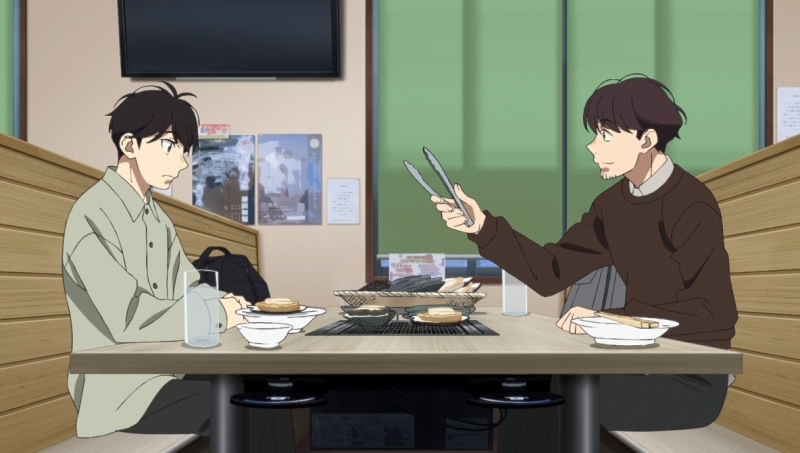
Previous 3 Winners
- 2022: Teasing Master Takagi-san (9/12)
- 2021: SSSS.Dynazenon (10/12)
- 2020: My Teen Romantic Comedy SNAFU Climax (11/12)
Overtake!’s 9th episode vaulted it into what became a two-series race for my anime of the year award. Unsurprisingly, I see it as the defining episode of 2023 and the clear winner. MyGo’s third episode, which was shot from a first-person perspective, is one of the most creative anime of episodes I have come across and made me take a moment to consider its case for category winner. MyGo almost took a second top-four slot with its excellent 10th episode, but I gave the slightest of nods to Overtake!’s satisfying finale and Oshi no Ko’s best episode, which featured the best individual scene of the year.
Best Opening/Ending Sequences
Note that I rank three things for opening/ending songs. First, I consider the song itself. Second, I consider the accompanying visuals for the song. Finally, I consider how well the song fits the series in question (this is why I do not consider ranking opening/ending sequences for series I have not watched).
| Rank | Series | Song | OP or ED | Singer |
|---|---|---|---|---|
| 1 | My Clueless First Friend | Kokorone | ED | Kitri |
| 2 | MIX | Haru no Oto | ED 1 (ep 1-12) | miwa |
| 3 | The Masterful Cat is Depressed Again | Ureu Kado niwa Fuku Kitaru | OP | somei |
| 4 | Oshi no Ko | Idol | OP | YOASOBI |
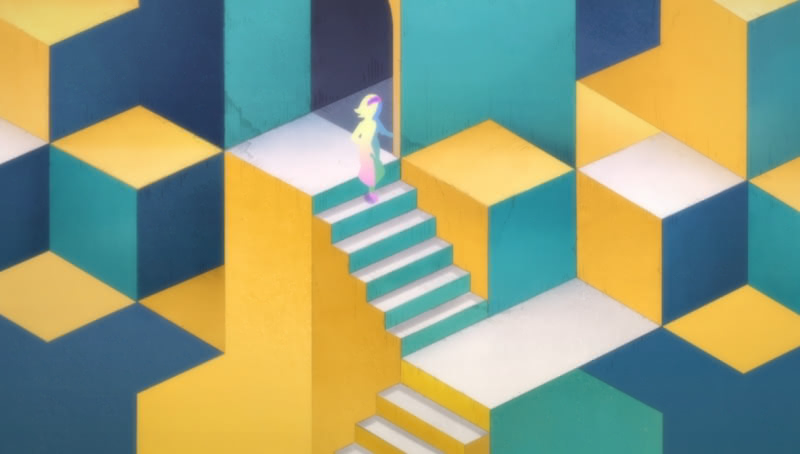
Previous 3 Winners
- 2022: Kaguya-sama Love is War – Ultra Romantic – (ED, ep 5 only)
- 2021: Laid-Back Camp (ED)
- 2020: Fly Me to the Moon (ED)
2023 was a banner year for opening and ending songs – such that it is not an exaggeration to say I could go 10-12 deep and still find candidates that would have made my lists in the previous years (including one that received a full article and did not make my top four). I dare say off the top of my head that it is the best year in this area going back to 2005. Oshi no Ko’s opening, Idol, was good enough to top Apple Music’s global music chart, but only good for fourth here (and more on account of its excellent production values than the admittedly catchy tune).
The winner of a great year for opening and endings is My Clueless Best Friend’s Kokorone, which combines a very good song with some of the best visuals for an opening/ending that I have seen. We have the painfully shy and bullied heroine, Nishimura, running through labyrinths in her nightmares, all well animated, until she reaches for a hand (obviously of her clueless best friend) before waking up at her desk. It is a genuinely perfect ending song and animation for the show.
MIX’s Haru no Oto is the most pleasant opening or ending song of the year and it was accompanied by fitting visuals for a baseball anime with a classic visual aesthetic (see my brief discussion). The Masterful Cat is Depressed Again (from the same studio that brought us the visually perplexing The Girl I Like Forgot Her Glasses) has a good, energetic opening song with a remarkable amount of animation in the visual accompaniment. Oshi no Ko’s Idol, indisputably the most popular opening of the year, is far from my favorite song (admittedly catchy, however), but the song combined with the visuals makes for an overall impression too good to leave off the list.
I would list all of our honorable mentions but I think this article has run long enough, so you can find them in a companion piece (link will be added when it is published). I will note in a ranking point that this is the third time in four years that my choice for best song came from a series outside my top-six.
Conclusion
2023 lacked a single great series on par which my selections for anime series of the year in 2021 and 2022. Overtake!, while impressive, is hurt somewhat in a broader evaluation by its relatively slow start. Oshi no Ko is hurt by its inconsistency. However, I think this year was stronger than both 2021 and 2022 outside the top six. For example, my sixth-place finisher in 2023 would have been third in 2022, and The Angel Next Door Spoils Me Rotten would have probably been fifth in 2022 instead of outside my top six in 2023.
One trend I did note in my 2023 ranking was that it more strongly favored series with strong production values – namely the sort of high level animation that is suggestive of having a significant budget and studio support – than previous years. Every series in my top six except for Insomniacs After School was clearly at least a cut above average in the production values department, headed by the outstanding Oshi no Ko. Neither my 2021 nor 2022 rankings had the same production values bias.
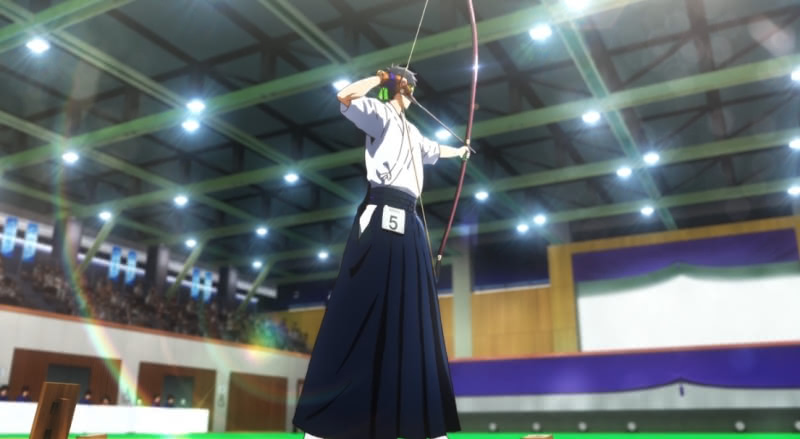
One positive in 2023 was the abundance of first seasons on my ranking. Vinland Saga was the only second season in my top six, which differs dramatically from 2022 wherein my entire top three consisted of second and third seasons. With the exception of my anime of the year selection, Overtake!, all the series in my top six either have confirmed future series or would seem to be plausible candidates for sequels.
Finally, I do hope we keep seeing the sort of quality opening and ending songs that we had in 2023 going forward. I had some difficulty filling out my best OP and ED lists in 2021 and 2022 on account of not finding the selections too inspiring. This year I felt bad about having to leave off half a dozen candidates. Let us hope that continues as we move into the middle section of the 2021-2030 decade in anime.
This concludes my 2023 anime year in review. If more than 9,000 words was not enough for you, I have published a humorous companion article where I air some grievances in the form of un-awards after my positive, serious, and measured take on the year that was in anime in this article (link will be added when it is published). With two strong fall 2023 seasons continuing into 2024, sequels for good series coming out, and the promise of new series, I hope to have plenty to write about for my 2024 anime year in review.
December 18, 2024 Update: I published some (very late) extra category awards for anime in 2023. I am not publishing an un-awards article for 2023 but I plan to include some with my 2024 anime reviews.
